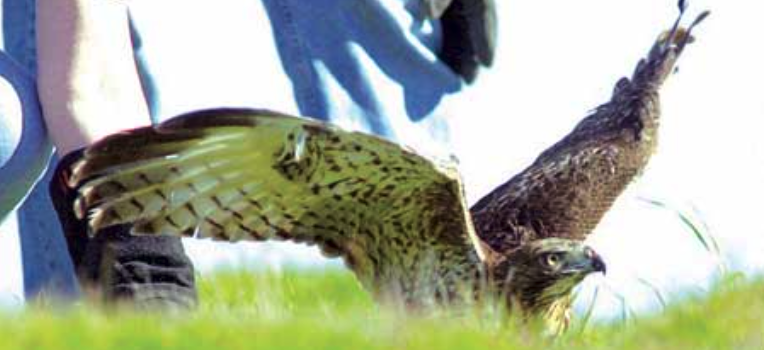A spate of bird deaths in rural South County has been linked to a deadly chemical found in varmint poisons, prompting local environmental health officials to reach out to property owners to make sure they are applying rodenticides safely and correctly.
Since December, the California Department of Fish and Wildlife has investigated the cause of death of two doves and one hawk in the area of Redwood Retreat Road. Laboratory tests confirmed the doves had died of strychnine poisoning, and the hawk had died after eating one of the poisoned doves, according to county officials.
“Strychnine is a strong poison and only a small amount is needed to kill a small bird such as a dove,” says a March 18 letter from the Santa Clara County Department of Agriculture and Environmental Management to property owners in the Redwood Retreat Road area. “Strychnine is a legal, over-the-counter bait designed for use against rodents, mainly gophers and moles. It is currently for use below ground using a probe to make sure the strychnine is only placed within rodent tunnels.”
The idea is the nuisance rodent will eat the poison and die underground, “leaving all other animals safe and not causing secondary kills,” the letter continues.
Santa Clara County Agriculture Commissioner Joe Deviney said it is likely that whoever placed the strychnine in an unsafe place accessible to the birds, did so by accident without following the directions on the product’s label. He said there have been no additional suspicious bird deaths since before March, so perhaps the county’s letter was effective in educating property owners.
County and state wildlife authorities do not know exactly from where the birds ate the poison, but the investigation was focused on the area where their corpses were found. Deviney noted it is often difficult to determine the precise source of such accidental animal poisonings.
“We took this approach to kind of educate everybody and be careful,” Deviney said. “It is important to control rodents, and there is often a need to control rats and mice. (Rodenticides) do serve a purpose.”
Thus, county authorities are not discouraging property owners from controlling their rodent problems with legal products, as long as they are used correctly. Such products are heavily regulated by the federal Environmental Protection Agency, and Deviney said some rodent poisons have been entirely banned from home and professional use in recent years.
Deviney further stressed that property owners should use the correct product for their specific problem—mole bait shouldn’t be substituted for an above-ground rat poison, for example.
Homeowners and property owners with questions about what kind of rodent might be damaging their yard can call the county agriculture office at (408) 918-4600. Information is also available on the University of California Cooperative Extension service website at cesantaclara.ucanr.edu.
The pest control industry is regulated by county authorities as well, Deviney added. Those who perform such services must be licensed and insured.


I am an ornithophile. I also love words. That said, Mr. Moore, the tragic loss of these three birds does not even remotely approach a spate of bird deaths.
Leave sensationalism to the tabloids, or go work for them; after all, it will pay better.